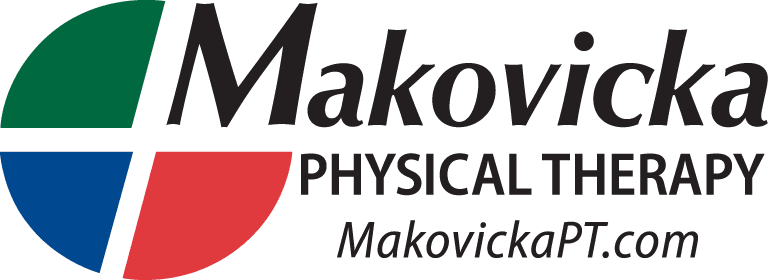Balance in Every Day Life
Has it been hard to stand or walk without feeling like you’re going to fall? Do moving objects in your visual field mess with your balance? We often take our balance for granted until we experience trouble getting out of a chair, walking, bending over to tie your shoes, or holding your kids or grandkids.
There are a few different systems that help tell us where our body is in relation to our environment that gives us a stable stance whether we’re standing or walking. We like to think of these systems as the three legs of a tripod. They all work together to keep us from falling or feeling like our balance is off.
Feel like you could benefit from physical therapy just for symptoms like these? Visit us at makovickapt.com
Visual System
One of them includes our visual system (our eyes) and tells us what the environment around us is like and what obstacles we may encounter. Often taken for granted, the eyes provide a large amount of information and takes into account what we are focused on as well as what is in our peripheral field (ambient vision).
Proprioception/Somatosensory System
Another system includes the proprioceptive/somatosensory system that tells us where our body is in space. The proprioceptive system uses sensory information that come from within the body. For example, if we hold our right arm above our head and close our eyes, we still know that the right arm is raised from information sent to our brains from sensory nerves. So if you think about walking or standing, we don’t really look at our legs when we’re walking but rely on the proprioceptive information from our legs to tell us where they are.
Vestibular System
The third one is the vestibular system, which has a lot to do with balance portion of our movements or stance. This system resides within our inner ear and as our head moves (along with our body) we receive information as to what direction and how fast or slow we’re moving. It doesn’t just help us with posture or stance but tells our eyes what they should be looking at and where to look next. Can you imagine how this might affect our balance if it were somehow “off” or not working right?
Typically these three systems are healthy as we’re young and can diminish in acuity as we grow old. Injuries to the head that we might sustain during sporting events or car accidents can also have an impact on these systems. These injuries are known as traumatic brain injuries (TBI) and sometimes can be tough to diagnose as they may not present themselves right away.
Balance and Vestibular Therapy
Some of the conditions that may be treated by balance and vestibular therapy include:
- Movement Disorders
- Chronic Mobility Disorders
- Neuro Degenerative Disease
- Fall Risk Identification
- Dizziness/Disequilibrium/Vertigo
- Vestibular Disorders
- Orthopedic Injuries
- Cerebral Vascular Accident (CVA)
- Migraines
- Head Injury/Concussion
- Spinal Cord Injury
- Worker’s Compensation
If you feel that you could benefit from physical therapy that is designed to treat these problems in balance then please give us a call or stop by any one of our locations.
